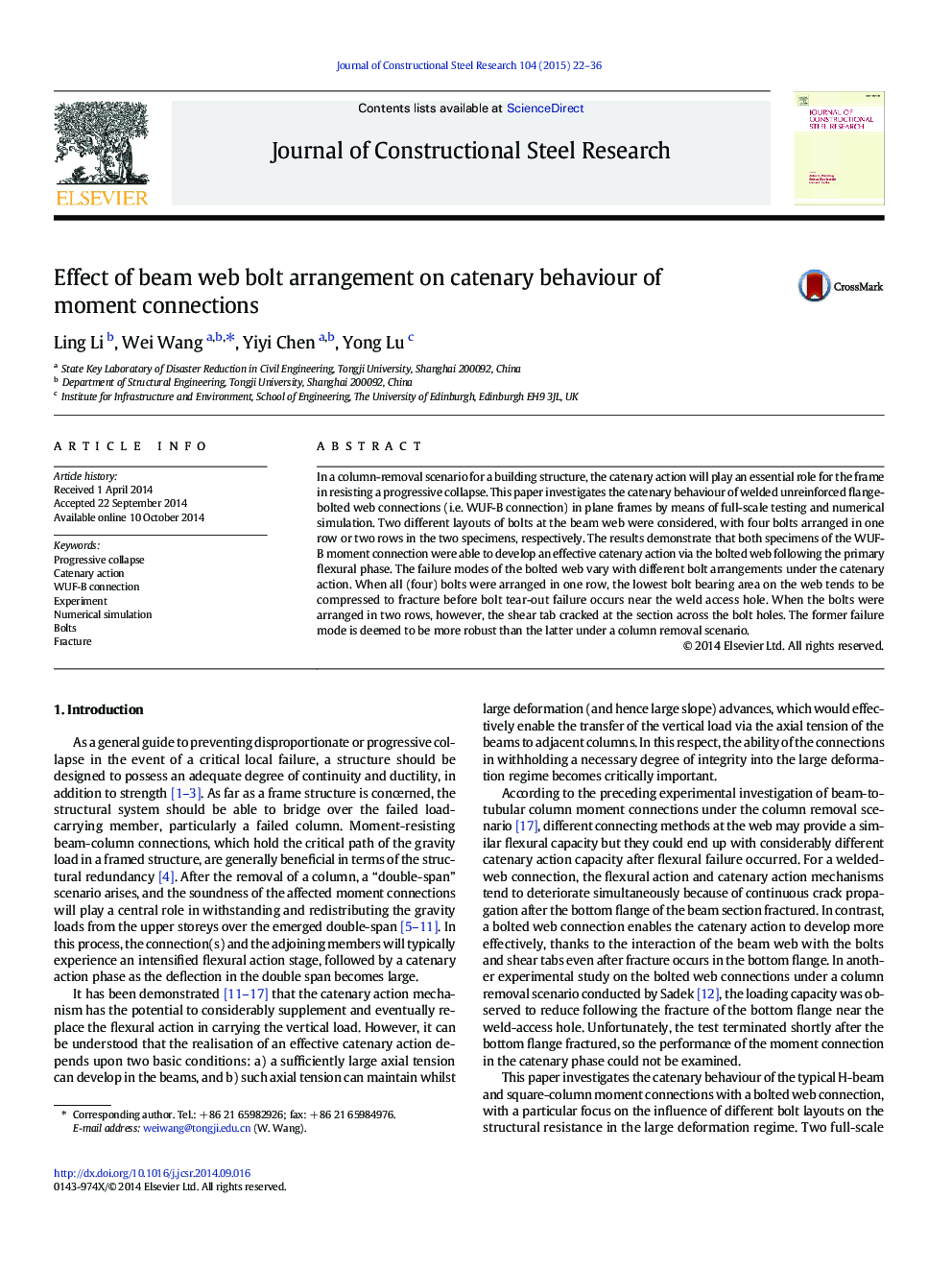| Article ID | Journal | Published Year | Pages | File Type |
|---|---|---|---|---|
| 284574 | Journal of Constructional Steel Research | 2015 | 15 Pages |
•Two WUF-B connections were tested and simulated in a column removal scenario.•The WUF-B connections effectively developed catenary action via the bolted web.•The failure modes at the bolted web depend on the bolt layout.•Bolt bearing and tear-out failure occurred near the lowest bolt.•The shear tab cracked at the net section across two bolt holes.
In a column-removal scenario for a building structure, the catenary action will play an essential role for the frame in resisting a progressive collapse. This paper investigates the catenary behaviour of welded unreinforced flange-bolted web connections (i.e. WUF-B connection) in plane frames by means of full-scale testing and numerical simulation. Two different layouts of bolts at the beam web were considered, with four bolts arranged in one row or two rows in the two specimens, respectively. The results demonstrate that both specimens of the WUF-B moment connection were able to develop an effective catenary action via the bolted web following the primary flexural phase. The failure modes of the bolted web vary with different bolt arrangements under the catenary action. When all (four) bolts were arranged in one row, the lowest bolt bearing area on the web tends to be compressed to fracture before bolt tear-out failure occurs near the weld access hole. When the bolts were arranged in two rows, however, the shear tab cracked at the section across the bolt holes. The former failure mode is deemed to be more robust than the latter under a column removal scenario.
